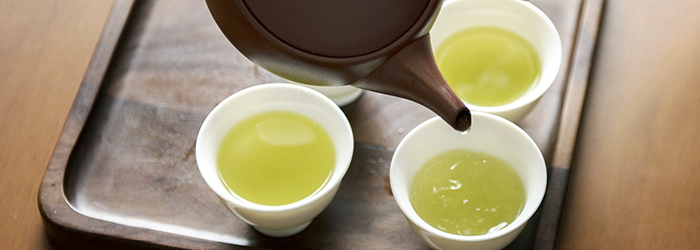What is Gyokuro Tea?

Released to public domain by owner. via Pixabay.
Gyokuro tea is one of Japan’s most famous styles, prized as the highest grade of sencha, or whole leaf tea. Though not as famous worldwide as the powdered matcha used in traditional Japanese Tea Ceremonies, the reputation and limited supply of gyokuro tea make it one of the most expensive and uncommon varieties from Japan.
In part, the value of gyokuro tea rests in the delicate leaf buds it is made from, just like premium green teas from other regions around the world. The first sprouts picked after winter dormancy are prized all over the world for the complex flavors and natural sweetness that are given time to develop as the plant rests. Gyokuro tea is further defined by the processes used to grow and craft these special leaves, which distinguish it from other green teas made around the world and from lesser grades grown in Japan.
The primary defining feature of gyokuro tea is that it is “shade grown” for a period of at least two weeks, or up to 30 days before harvesting. This means that the leaves are shrouded with loosely woven black fabric that allows only 10% of the natural sunlight to reach the growing leaves. For larger farms, the shades are drawn over a scaffolding of poles placed among the plants, allowing plenty of space underneath for workers to tend to the plants. On smaller plots, the covers may be laid gently over the plants themselves, and rolled back each day as the plants are maintained. For some of the highest grades, additional straw is laid over the coverings to reduce the levels of light even further.
The end result is that the plant’s natural process of photosynthesis is interrupted, in an exaggerated version of the slow growth that occurs in naturally clouded or misty areas like high elevation tea gardens in Taiwan or China. The plant retains more chlorophyll, rather than converting it to bitter tannins. Scientific analysis has shown that shade grown plants also produce higher levels of theanine and fructose, contributing to the natural sweetness of the early harvest leaves.
Released to public domain by owner. via Pxhere.
These effects are emphasized with traditional Japanese processing techniques, wherein the leaf is steamed and dried, retaining the high levels of chlorophyll attained in the shade. In contrast to the Chinese methods of roasting green teas, this style of crafting lends a rich, umami flavor to the finished tea. This unique flavor profile requires great precision to brew correctly, with water barely more than 100°F, and a steeping time of 90 seconds or less. Over-steeped Japanese green teas can quickly become extremely vegetal in flavor, thanks to their high chlorophyll content.
As with most highly prized tea styles, it can be difficult to verify the quality or authenticity of gyokuro tea without a direct connection to the few specialized farms that grow it. Luckily, the naturally sweet flavors of early harvest green tea can also be found in Chinese varieties, like our Ming Qian Dragonwell, picked before the Qing Ming holiday in the spring. Though the delicate, toasty flavor notes are more subtle than a Japanese gyokuro, we appreciate their forgiving brew.
Have you tried gyokuro tea? Let us know what you think in the comments below!
Sign up for our newsletter to get blog updates in your inbox!





Comments on this post (0)